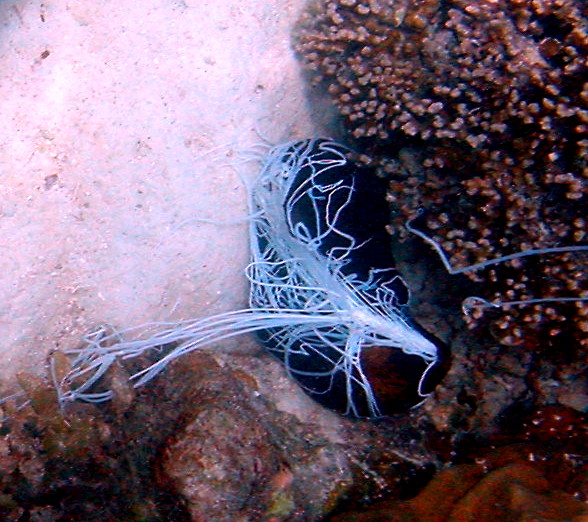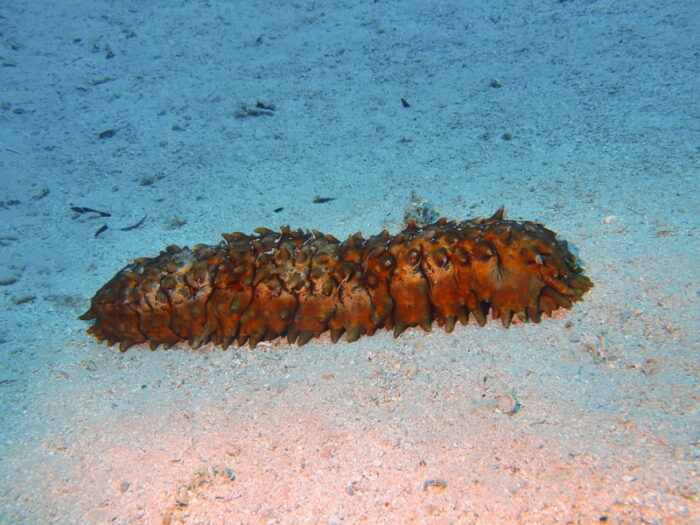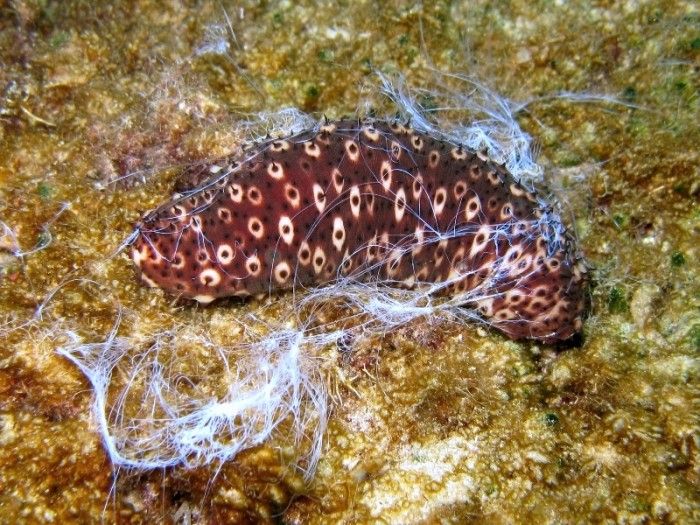Happy Earth Day!
Here on OWLconnected, we've been building up to this special day for a little while now. It can be a time for some pretty serious reflection about the issues that face our planet.
But it should also be a time to marvel at the miraculous, inspiring, and beautiful parts of our fascinating world.
As well as the just plain weird!
To drive this point home, we'd love to celebrate Earth Day by talking about the sea cucumber—an animal named after a vegetable that defends itself not by using its head, but its butt!
Sticky solution

Surprise! (Wikimedia Commons)
If a sea cucumber feels threatened, it will eject a tangled mess of internal organs called Cuvierian tubules. Whether it is being attacked by a fish, a crab, or some other predator, the thread-like organs are sticky and extremely effective at stopping the enemy. It's essentially like tossing a net over them. And while the predator struggles, the sea cucumber simply shuffles away.
Biologists have actually known about this behaviour for a long time. The name Cuvierian tubules comes from French zoologist Georges Cuvier, who first described it nearly 200 years ago.
But a brand new study has learned a big reason why this defense is so effective. The tubules are made of a protein that is very similar to the ones found in spider silk. This means that even though they are quite thin, they are extremely strong. And as soon as they hit the water, these threads are instantly pumped full of seawater, expanding about 20 times their original thickness.
It is a powerful defense. Have a look at this poor crab that went from thinking it was getting an easy meal to being caught up in a sticky mess!
Regenerator

Sea cucumbers are slow-moving animals that tend to rely on things like camouflage, toxins, or hiding to avoid predators. But the Cuvierian tubules can work as a last resort. (ID 27367094 © Alexander Ogurtsov | Dreamstime.com)
It does seem pretty effective, doesn't it? In fact, some of these attackers are so caught up in the tubules, that they ended up being unable to hunt and eventually die.
But if you were paying attention to what we said earlier, you might be wondering about something. Didn't we say that these Cuvierian tubules are internal organs? And aren't internal organs sort of important to living? So how does using this defense effect the sea cucumber?
The Cuvierian organ is found at the base of the breathing organ of a sea cucumber, which is called the respiratory tree. The Cuvierian organ has hundreds of these tubules. When the sea cucumber is attacked, many, but not all, of these threads are literally pushed through a hole that is made in the animal's rear end. Ouch!
After the incident, the sea cucumber retreats to a safe place to heal up. And within a few weeks, amazingly everything is regenerated. It is as though it never happened at all!
So while the sea cucumber can't just go around using this defense as often as a spider spins its web, when it really needs a life-saving move, it knows what to do!
 What a mess! These sticky threads, called Culvierian tubules, are a part of an internal organ. (Wikimedia Commons)
What a mess! These sticky threads, called Culvierian tubules, are a part of an internal organ. (Wikimedia Commons)










Wow! That’s pretty gross! I wouldn’t want to be that crab, everyone should know that walking through spiderweb is the worst feeling ever!!!🤢😆